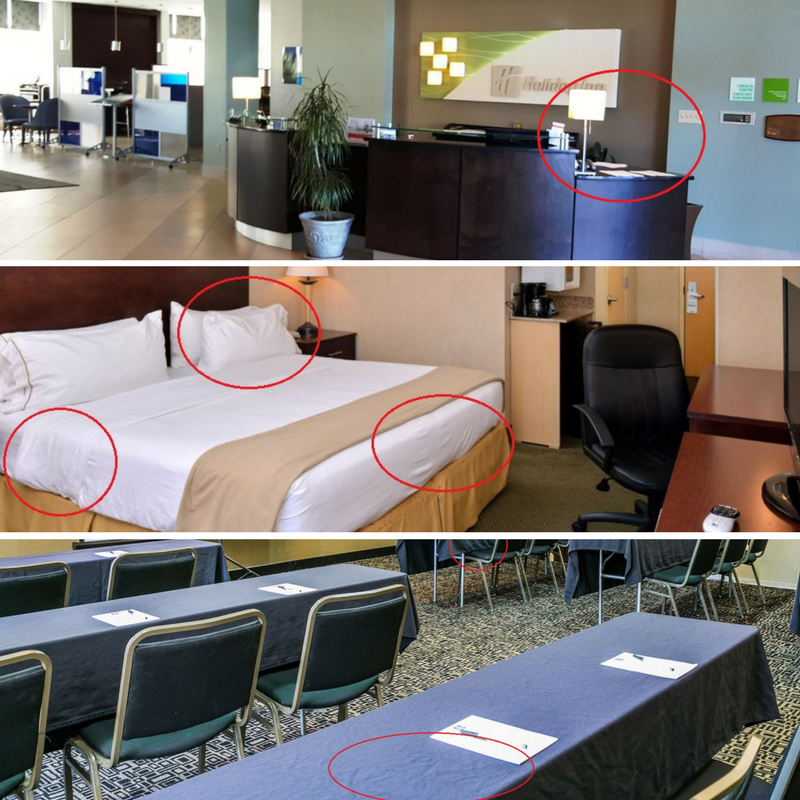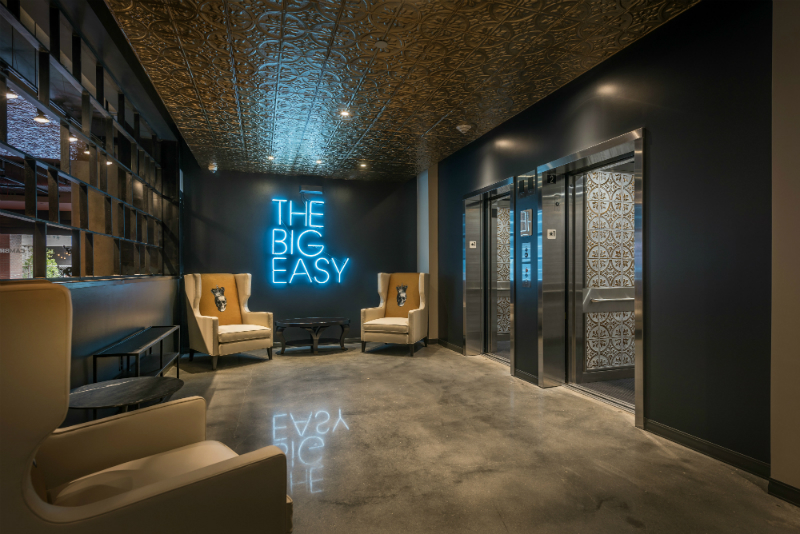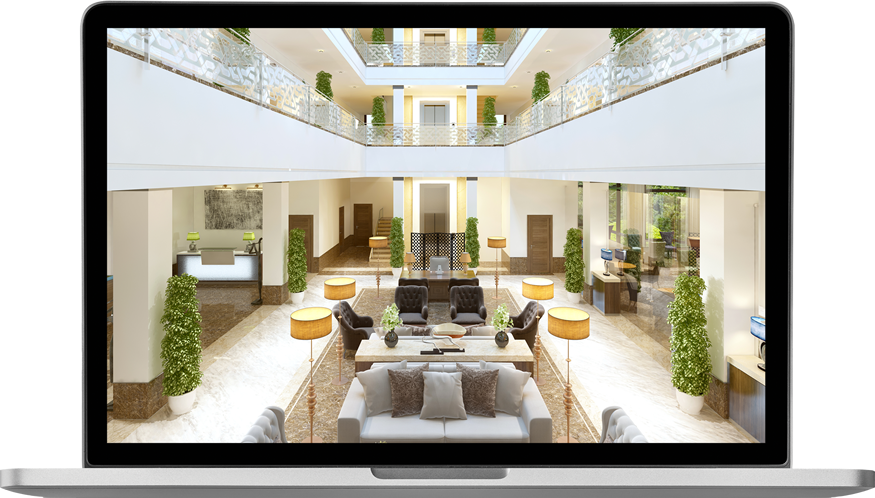Wistful images of friends abroad often fill up my Instagram feed. Beautiful shots of beaches and amazing photos of historic architecture make me long to hop on a plane, especially when the cold of a Chicago winter hits. Honestly, I am often perfect bait for hoteliers to highlight their city, and by extension their hotel, as I scroll through the dream stage of trip planning.
But even if a hotel’s Instagram game is strong (thank you, social team), my travel daydreams are instantly deflated when I see lackluster hotel photography displayed front and center on a hotel’s website.
We have addressed this issue before (way back in 2011 six years in real time, but 16 years in design time). Since then, we have talked about the importance of good photography in regard to weddings, OTAs, and, obviously, social.
But good hotel photography, in general, is more relevant than ever. According to Adobe’s 2017 Digital Trends Report, 38% of people will stop engaging with a website if the content/layout is unattractive. So while you may have quality, SEO-optimized copy on your page, users might not get past that musty-looking masthead photo of your lobby from five years ago.
So please, invest in some good hotel photography.
Step 0.5: If you are a brand, make sure you know your brand rules.
The most important first step is only applicable to brands: follow your brand’s guidelines when it comes to photography, especially in relation to photography release forms. You want to make sure all your ducks are in a row with the brand before you drop even one dollar on new photography.
Step 1: Invest in professional photography.
Spend the money.
The key word in this step is invest. Good hotel photography is going to require more than spare change. But just like most investments, it will pay off. These are photos you (and your marketing team) will use across both digital and traditional marketing channels. When you have good photos, content is much easier to create. So spend the money on proper photography.
Hire a professional.
Furthermore, hire a photographer with experience in shooting interiors and exteriors. Preferably, hire someone who has a background in photographing hotels. Just because your cousin’s boyfriend’s dog-sitter is a professional portrait photographer and will give you a small discount does not mean they will be right for the job.
Avoid stock photography.
Stock may be appealing because it is cheaper, but it is cheesy, overused, and blurs the guest’s mental picture of what your hotel is really like. If that isn’t reason enough not to use it, consider this: stock photos can get so overused that they become an internet joke (see the brief history of Everywhere Girl). Moreover, there is even an easily accessible online tool that can tell you just how many people used the exact same image.

Step 2: Set up your shoot for success.
Schedule your session.
Try to schedule your photographer at an optimal time in your building process. You do not want to photograph construction, but you also do not want to inconvenience a hotel full of guests. If you are not building a new property but need to take new photos, try scheduling a photoshoot during your off-season. Find that sweet spot where your hotel is presentable, but not fully booked.
Light your photos
You can cut down on a good amount of post-production editing by having good lighting when shooting photos. Ask your photographer what lighting they plan to bring and what you can provide to make lighting easier. Your photographer can give you more suggestions, but simple things like new light bulbs and clean windows for natural light can make a big difference.

Clear the clutter.
When you are setting up shots, remove anything that would not naturally be there. This includes random (i.e. not styled) napkins in your dining area, dirty towels by the pool, scattered office supplies on your front desk and the like. Smooth the bed sheets and the tablecloths. These things take only a few seconds during the photoshoot, whereas fixing them later in Photoshop can take hours.

Do not photograph people.
This includes accidental models or intentional models. Intentionally using models in hotel photos can often feel forced and unnatural. I’ve even gotten photos with an angle of someone in the room’s mirror that had to have been taken from the shower…rather, let the room speak for itself.
To avoid accidental models, make sure your staff knows in advance when and where photos will be taken. That way staff can adjust their workload as needed and you do not have to stop people from walking through your shot.

Step 3: Optimize the images for your needs.
Include negative space in photos.
Negative space, also called white space, is the area which surrounds the main subject of your photo. So when a photo is crowded with lots of elements, there is a lack of negative space. This then confuses the eye as to what it is supposed to focus on. In addition, photos with little to no negative space are difficult to crop and therefore difficult to use across multiple marketing mediums.

This photo is a good example of use of negative space, as it has one point of interest that your eye is drawn to. Plus there is plenty of negative space at the top and bottom of the photo so it can be easily cropped.
Get a variety of photos.
Beyond getting both landscape and portrait shots, ensure you will also be receiving photos with different aspect ratios. Similar to the usefulness of negative space, photos with different aspect ratios can be more easily cropped and translated to different mediums.
Emphasize room differences.
Your photos should clearly indicate the difference between a king room and a king suite in one glance. If your room types are based on different views, take pictures of the different views.

This client has a suite that offers beautiful views of the Las Vegas skyline on your own private patio. This is a great photo of the view and the patio. Believe it or not, I’ve seen hotels offer suites named after views with no pictures of the view.
Understand post-production expectations.
Your photographer should be providing you with edited images. You want things like lighting adjustment and basic color correction to be addressed in your contract. However, make sure you are receiving the full versions of the photos, in high resolution, and not cropped (you can always crop the photos later). And while there is always room for a little artistic leeway, leave the crazy angles and heavy filters to first-time Instagram users.

Making this photo better took me less than 5 minutes and a free online photo editor.
Step 4: Add personality to your photos.
Emphasize the details.
Small details are what differentiate your hotel. Photographing them helps set you apart from your competitors and offers visual representation of your amenities.

This hotel offers lawn games on their outdoor patio, including giant jenga. Photographing this fun detail draws attention to an amenity that does not come across in a bulleted list.
Incorporate elements that tell a story.
Placing small props that relate to your hotel’s story breaks up the monotonous elements of hotel photos that guests have come to expect. For example, a fitness focused hotel could include a pair of athletic shoes on the floor in a room photo or a (hotel branded) reusable water bottle sitting on the bathroom counter. Remember to not go overboard; less is more.
Tap into user-generated content.
While your guests’ photos should not be a main source of photography, using them as supplemental material can help engage visitors. In fact, according to Sprout, when a guest sees a user-generated photo, they have a 4.5% higher chance of conversion. You can use the same basic principles of utilizing user-generated content on social media on your website. The most important rules when it comes to using someone else’s photo: get their permission and credit appropriately!
Good hotel photography is worth it.
Hotel photography, at its best, is the picture-perfect narrative of your hotel. Investing in it will take some time and it will take money, but the payoff will be well worth it. Nervous about incorporating that beautiful new photography into your website? We can help with that too.




